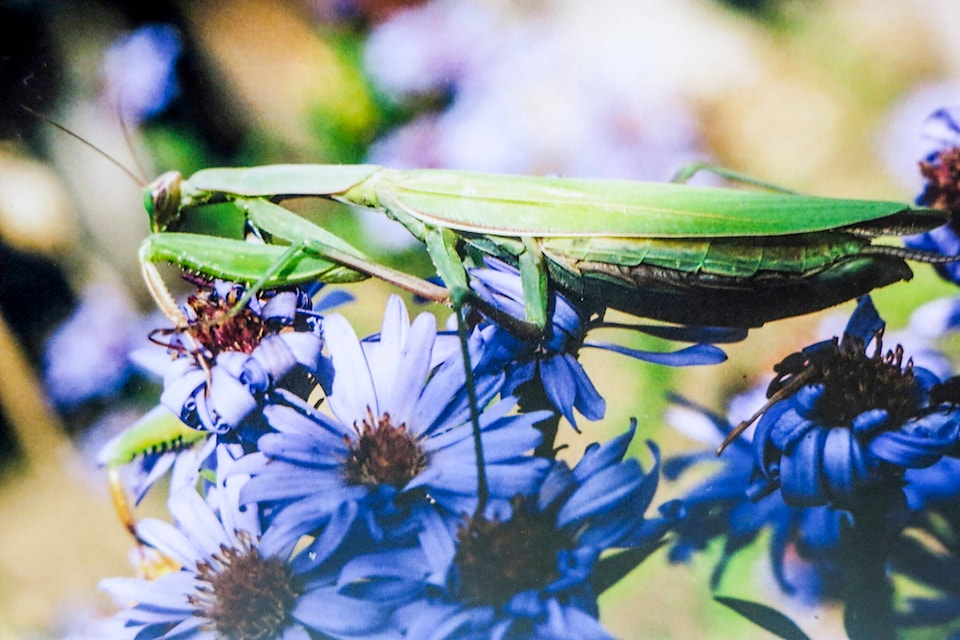By Ed McMackin, biologist by profession and naturalist by nature
While sitting at a local park having lunch, I saw a praying mantis fly by and land on a chainlink fence. I don’t know why it landed on the fence except, with wings spread, it was probably too large to maneuver through it. Shortly after, it flew to some shrubs.
In the afternoon, of the same day, I met a young woman walking towards me. She told me she had a praying mantis. Perched on her shoulder was a male praying mantis supposedly comfortable, at least for the moment, with the ride. She also said she had, at home, a female with a broken wing. Another individual I met also reported a mantis. Like 2016, it must have been a good season for praying mantises.
It is hard to image, when a praying mantis is observed, that this odd-appearing insect can fly. But underneath that bright green or tan back, comprised of left and right cover-wings, are a pair of translucent wings for flying. Even the large females, with an abdomen full of eggs, can fly at a moment’s notice. I have observed mantises only on warm sunny days, when they seem to fly without any specific movement or apparent preparation. Without notice they take off and fly away like they they have already logged lots of flight time, and they do it on those flimsy wings.
Many large, flying insects prepare for flight by “warming up”. Large moths and the giant water-bugs, with wings spread, vibrate or “shiver” to warm up for flight. Both hang on with their feet, jiggling to the point of almost losing their balance. Then, they let go, and with a whir of wings, they are gone. Praying mantises may warm up in a similar fashion.
Praying mantises belong to the Orthoptera family of similar leathery fore-winged insects, which includes grasshoppers and the rest of the kin. Interestingly, praying mantises are predatory, preying mostly on other insects, while grasshoppers are mainly plant eaters.
The name “praying mantis” was applied because the front legs are often held up as if praying. But instead, they are actually getting ready to “prey” on their next meal.
Male praying mantises are long and slender while females are fatter, containing a large number of eggs. An adult praying mantis may reach a length of 2.5 inches. The tan colored eggs are contained in compact layers in a mass that has a texture like like brown foam when hard. It may be attached to a grass-stem or to the side of a building or board. The egg, from which a 2.5 in. adult develops, is barely a quarter of an inch long.
“I recall once, having an egg cluster hatch out. The hatchlings, nymphs, were very small miniatures of the adults. These miniatures walked about like adults, exploring their new surroundings. It was amazing, being so small, how they could have perfectly functioning leg-joints and necks, enabling them to look from side to side. A mantis (or mantid) is supposedly the only insect that can “look over its shoulder.” At the newly hatched stage they are very vulnerable to insect eating birds and insects.” (Out There – Praying mantises winding up summer activity. Oct. 27, 2016. Creston Valley Advance).
Most of the praying mantises we see around the Kootenay Lake Region have been introduced originally from China and Europe. Although they have been observed in the Okanagan for many years, mantises found in the Kootenays probably moved in directly from the south. Canada’s smallest mantid is found in the Okanagan.
Praying mantises may still be observed through most of October, or at least until there is a severe frost. They may survive later into the first weeks of winter if located in a warmer environment like a shrub, house, barn, or garage.
READ MORE: Out There: Understanding the Watergate
